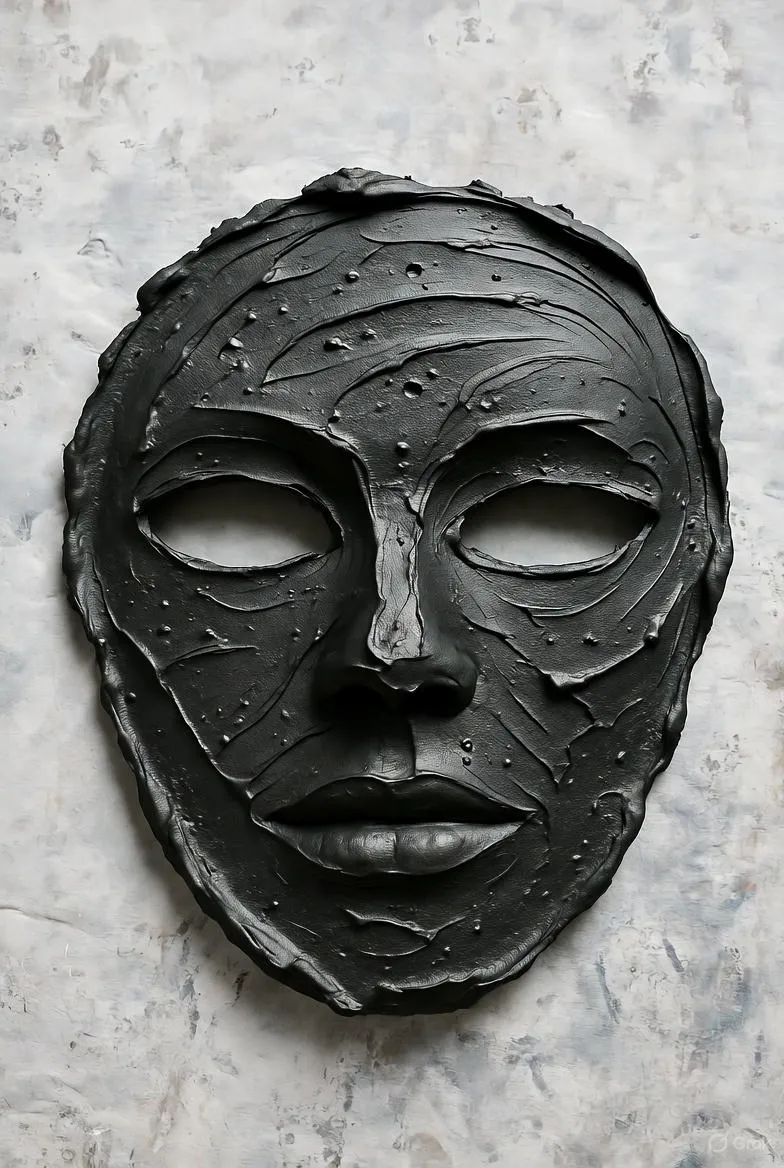Soothe Your Skin: The Ultimate Guide to Healing Calendula Face Masks
Discover the soothing and healing benefits of calendula face masks for irritated, acne-prone, and sensitive skin. Explore DIY recipes, application tips, and why this natural remedy promotes regeneration and reduces inflammation for a radiant complexion.

Introduction to Calendula's Healing Touch
Calendula, often referred to as the pot marigold, has been a staple in herbal medicine for centuries. Its vibrant orange petals are not just visually appealing; they pack a punch when it comes to skin care. If you're dealing with irritated, inflamed, or healing skin, incorporating calendula into your routine via face masks can be transformative. These masks are gentle yet effective, making them suitable for a wide range of skin concerns, from acne breakouts to post-sun exposure redness.
What makes calendula stand out is its natural ability to soothe and repair. Unlike harsh chemical treatments, calendula works in harmony with your skin's natural processes, promoting regeneration without causing further irritation. In this guide, we'll dive deep into the benefits, explore DIY recipes, and share tips to maximize the healing potential of these masks. Whether you're a skincare enthusiast or a beginner looking for natural alternatives, calendula face masks offer a soothing escape that leaves your skin feeling renewed.
The Science Behind Calendula's Soothing Properties
At the heart of calendula's efficacy lies its rich composition of bioactive compounds. Flavonoids, carotenoids, and triterpenoids are the stars here, each contributing to its anti-inflammatory and antioxidant prowess. These elements help neutralize free radicals that damage skin cells, while also reducing swelling and redness associated with various dermatological issues.
Anti-Inflammatory Benefits for Irritated Skin
Inflammation is the culprit behind many skin woes, from eczema flares to acne-induced redness. Calendula's anti-inflammatory agents, such as faradiol, work by inhibiting the production of pro-inflammatory cytokines. This means less puffiness and discomfort, allowing your skin to heal faster. Studies have shown that topical applications of calendula extract can significantly reduce symptoms in conditions like dermatitis, making it a go-to for sensitive skin types.
Imagine applying a mask after a long day in the sun or during a stressful week when breakouts appear. The cooling sensation from calendula provides immediate relief, while its deeper action supports long-term recovery. Users often report a noticeable decrease in itchiness and tightness within minutes of application.
Promoting Wound Healing and Skin Regeneration
Calendula isn't just about calming; it's a healer at its core. The plant stimulates collagen production, essential for repairing damaged tissue and improving skin elasticity. This is particularly beneficial for those recovering from minor cuts, burns, or surgical procedures. By enhancing epithelial cell growth, calendula accelerates the closure of wounds, reducing the risk of scarring.
For everyday use, this translates to smoother, more even-toned skin over time. If you've struggled with hyperpigmentation from old acne spots, regular calendula masks can fade those marks by encouraging cell turnover. It's like giving your skin a gentle nudge to rebuild itself stronger and more resilient.
Antioxidant Defense Against Environmental Stressors
Our skin faces constant bombardment from pollution, UV rays, and blue light from screens. Calendula's antioxidants, including beta-carotene and quercetin, form a protective shield. They scavenge harmful oxygen species, preventing oxidative stress that leads to premature aging. Incorporating these masks into your weekly routine can help maintain a youthful glow, warding off fine lines and dullness.
Beyond protection, these compounds hydrate deeply, drawing moisture into the skin layers. Dry, flaky skin becomes a thing of the past, replaced by a plump, dewy complexion that radiates health.
Why Choose Face Masks for Calendula Delivery?
Face masks allow for concentrated application, ensuring the active ingredients penetrate deeply without dilution. Unlike creams that you rub in quickly, masks sit on the skin, giving calendula time to work its magic. This method is especially effective for targeted healing, as the mask creates a barrier that enhances absorption.
Moreover, DIY versions let you customize based on your skin's needs—adding honey for antibacterial properties or oats for extra exfoliation. This personalization makes calendula masks versatile, fitting seamlessly into any skincare regimen, be it minimalist or elaborate.
DIY Recipes for Soothing Calendula Face Masks
Creating your own calendula face mask is straightforward and rewarding. You'll need dried calendula petals, easily sourced from health stores or online. Infuse them in oil or water for the base, then mix with simple kitchen staples. Here are four tried-and-true recipes to get you started.
Recipe 1: Basic Soothing Calendula and Yogurt Mask
This mask is perfect for beginners and those with dry or sensitive skin. Greek yogurt provides probiotics and lactic acid for gentle exfoliation, while calendula soothes.
- 2 tablespoons plain Greek yogurt
- 1 tablespoon calendula-infused water (steep 1 tsp dried petals in hot water for 10 minutes, strain)
- 1 teaspoon honey (optional for added moisture)
Mix ingredients until smooth. Apply to clean skin, leave on for 15-20 minutes, then rinse with lukewarm water. Use twice weekly for optimal results. The yogurt's creaminess pairs beautifully with calendula's floral notes, leaving your skin soft and balanced.
Recipe 2: Healing Honey and Oat Calendula Mask
Ideal for acne-prone or inflamed skin, this combines honey's antibacterial action with oats' calming effects.
- 1 tablespoon finely ground oats
- 1 tablespoon calendula-infused oil (infuse 1/4 cup dried petals in 1/2 cup carrier oil like jojoba for 2 weeks)
- 1 teaspoon raw honey
Blend into a paste. Spread evenly, relax for 10-15 minutes, and gently massage off. The oats absorb excess oil without stripping, while calendula targets inflammation at the source. Expect clearer pores and reduced redness after consistent use.
Recipe 3: Hydrating Aloe and Calendula Gel Mask
For sunburned or dehydrated skin, aloe vera amplifies calendula's regenerative powers.
- 2 tablespoons fresh aloe vera gel
- 1 teaspoon calendula tincture (alcohol-free preferred)
- A few drops of lavender essential oil (for extra calm)
Whisk together and apply liberally. Let it set for 20 minutes before rinsing. This mask feels incredibly cooling, making it a summer essential. Over time, it helps restore the skin's moisture barrier, preventing future dryness.
Recipe 4: Exfoliating Clay and Calendula Detox Mask
Bentonite clay draws out impurities, with calendula preventing over-drying.
- 1 tablespoon bentonite clay
- 1 tablespoon calendula tea (brewed strong)
- 1/2 teaspoon apple cider vinegar
Form a paste with the tea, add vinegar last. Apply thinly, avoid the eye area, and remove after 10 minutes with a damp cloth. This duo detoxifies while healing, resulting in purified, glowing skin. Limit to once a week to avoid irritation.
Tips for Application and Maximizing Benefits
To get the most from your calendula masks, preparation is key. Always start with a clean face—double cleanse if needed to remove makeup and sunscreen. Steam your face beforehand to open pores, enhancing penetration.
During application, find a quiet spot to unwind. The ritual itself is therapeutic, so pair it with deep breathing or meditation. Post-mask, follow with a lightweight moisturizer to seal in the goodness. Toners with witch hazel can complement calendula's effects by further balancing pH.
For best results, consistency matters. Incorporate masks 2-3 times per week, tracking changes in a skincare journal. Note improvements in texture, tone, or specific concerns like reduced breakouts. Patience is essential; natural remedies build efficacy over time.
Precautions and Considerations
While calendula is generally safe, patch test new recipes on your inner arm to rule out allergies. Those with ragweed allergies may react, as calendula is in the same family. Pregnant individuals should consult a doctor before use.
Use fresh ingredients to avoid spoilage, and store extras in the fridge for up to three days. If irritation occurs, discontinue and seek professional advice. Remember, masks are supportive, not substitutes for medical treatment in severe cases.
Real-Life Transformations with Calendula Masks
Many have shared their journeys with calendula masks. Take Sarah, a 32-year-old with chronic eczema; after a month of weekly yogurt masks, her flare-ups diminished by 70%, and her confidence soared. Or Mike, battling post-shave irritation— the honey-oat recipe became his go-to, transforming rough patches into smooth skin.
These stories highlight calendula's accessibility and effectiveness. It's not just about healing; it's about reclaiming joy in self-care. Communities online buzz with variations, from adding turmeric for brightening to rosewater for luxury.
Integrating Calendula Masks into Your Routine
Building a routine around these masks is simple. Alternate recipes based on the week's needs—yogurt for hydration mid-week, clay for weekend detox. Pair with gentle cleansers and sun protection to amplify results.
For long-term skin health, consider growing your own calendula. It's easy in sunny spots, ensuring a fresh supply. This connection to nature enhances the holistic benefits, grounding your practice in mindfulness.
Conclusion: Embrace the Soothe of Nature
Calendula face masks offer a gentle path to healing, blending ancient wisdom with modern self-care. Their soothing embrace calms the chaos of daily life on your skin, fostering resilience and radiance. As you experiment with these recipes, you'll discover a personalized ritual that not only heals but also nurtures your well-being. Dive in, and let calendula work its quiet magic—your skin will thank you.


